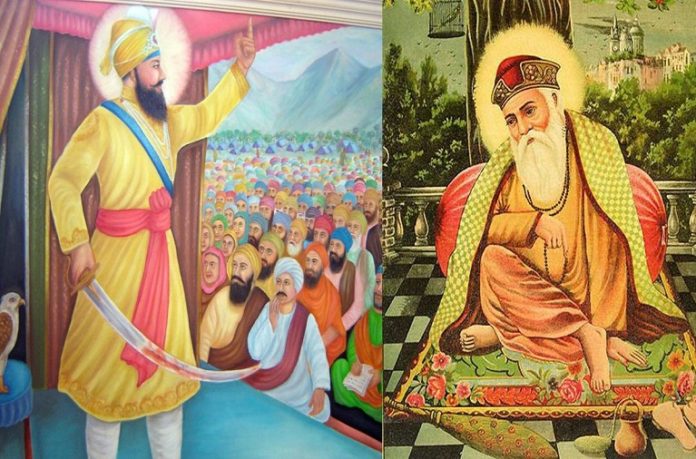
(Boney Bindra/Umang Kochhar) You know how Sikhism is often called the modern day religion, we agree to it. Nonetheless, there are some things that all the religions are prone to, and the underlined one is borrowing famous beliefs from already present religions.

Idol/ Picture worshiping, deep-mala in Gurughars, same evening prayer (Arti), these are some of the things we rented from the Hinduism, but we have also borrowed religious rituals from Islam.

Are you familiar with the concept of offering broom and salt in various Sikh temples, seeking the cure of Skin related diseases?
Yes we are going to discuss that today;
From The Adam
A place whose geography defines its name, a place whose belief system is deeply embedded with its geo-graphical significance, a place whose culture sings and dances to the praises of its geographical positioning, this is the land of five rivers, Panjab/Punjab.

Over the years, the region of Punjab/Panjab has witnessed the intermingling of various cultures which has impacted its linguistic, political, social, and religious setting.
In the same way the attributes attached with the religious variety of the Punjab can be realised through the intermingling of folk beliefs.
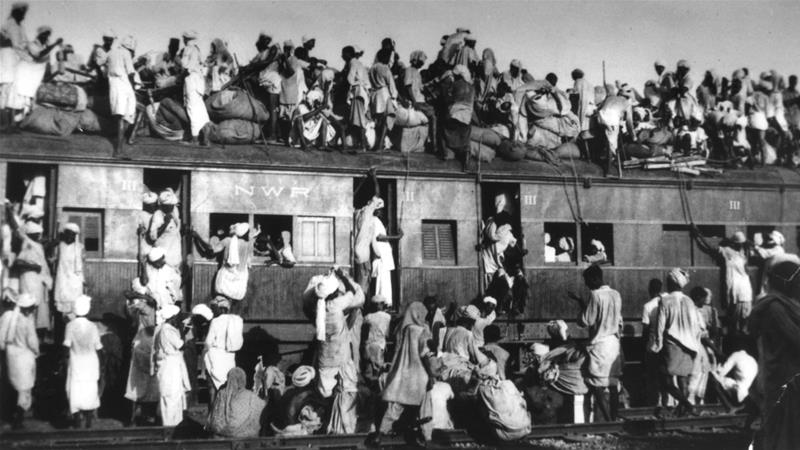
These beliefs embody the Punjabi lifestyle through the notion of physical well-being, happiness, rituals, customs, etc.
The Tale of Two
To unravel these developments in relation to the folk beliefs one needs to take a brief look on the partition history of India and Pakistan and in particular the Panjab/Punjab.
Presently, the region(s) of Panjab/Punjab represents two different physical and political units.
Similarly, many of its folk-beliefs represent its own political unit.

The saga of partition left a deep scar in the cultural settings of these geo-political landscapes, as Hindus and Sikhs fled Pakistan for India, while Muslims sought a home in Pakistan, this particular turn of events turned the tables for the political allegiance.

Thus, this deep play of armed conflict at that time among Hindus, Sikhs, and Muslims left as many as one million people dead.

Presently, Punjab Province in Pakistan forms a Muslim majority where Hindus, Sikhs, and the Christians live in a minority.
“Chadhda” Punjab
Whereas, in the Eastern Punjab that is Indian Punjab, the Sikhs account with a majority and the Hindu here account for 38 percent of the population and the Muslims, Christians and small numbers of Buddhists and Jains live in a minority.
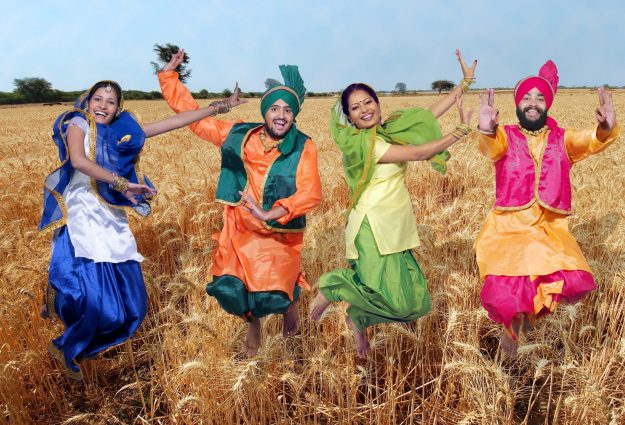
This particular change brought in the society by the shift in the politics created a new environment for the flourishing of the religion founded by the Guru Nanak.
Also, these developments paved a way for the alteration and new addition to the pre-existing belief system.
Since, water works as a catalyst for many of Punjab’s folk beliefs, this study is invested in the southern region of Punjab.

Water is one such thing which gives Punjab its identity and soul to its belief system.
Back To the Future
I (Umang) was born in early 1990’s, the very time when the effects of operation ‘Blue Star’ were fading away.
Apart from attaining a separate land for the Sikhs of the Punjab, issue pertaining to the control of river waters was one of the essential embodiments during insurgency period.

In fact, it was one such issue which is still widely debated.
I was raised in Jaito a small sleepy town in district Faridkot, which comes under the semi-arid belt of the Indian Punjab.
The Guru Effect
Town’s history is attached to the last Sikh Guru namely Gobind Singh.
If exploring the history of Malwa region of Punjab or the Southern Punjab, many sites are connected to the travel stories of Guru Gobind Singh.
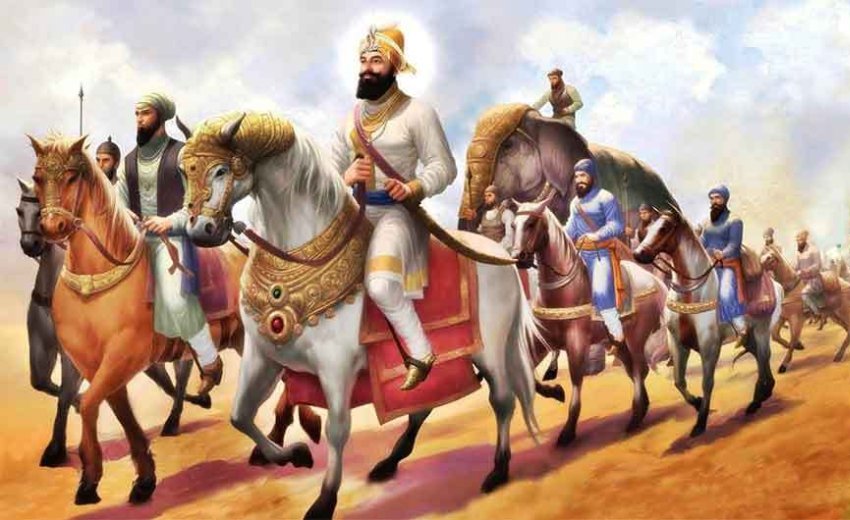
Interestingly, many of the Sikh converts in this region are because of the last Sikh Guru.
Similarly, the pre-existing belief system in this region had to do with Hinduism and Islam.
If one looks at the developments within the sphere of Sikhism, popular centres on the caravan routes contributed to its major chunk of converts.

Hence, the ‘culture’ and the folk beliefs which snuggled into Sikhism were affected by these centres which were close to the rivers.
Thus, the concept of holy bath in a Sikh temple is a result of a localisation of the popular culture.
Since, water is regarded as sacred in the Hindu belief system; the role of holy water in Sikhism serves the common purpose of purifying the body and soul.

The sole purpose of this research is to unravel the clichés behind the belief system in the region of Malwa and in particular the town of Jaitu.
A Story of Gangsae Jaito
To take a deep dive into these popular beliefs this study looks towards the ritualistic practices attached to the Sikh temple of Gangsar Jaito.
The etymology of the word Gangsar is attached to the folk story of Guru Gobind’s travel in this region. When broken down it is a combination of two words i.e.
Ganga or Ganges and Sarot (water source).
According to a popular folk story with which I grew up, it points towards an interaction between a Hindu priest and Gobind Singh.
Guru during his travels was resting in this semi-arid region when he saw the priest crying to which Guru asked him about his grief.
The priest informed him about the lost bowl of holy water from Ganges.
On which as per Sikh mythology, the Guru shot an arrow to the ground which opened a water source and their Guru asked him to look for his lost bowl.
Since, then this site is held in great belief among the Sikh followers.
A Dip That Matters
It is believed that, if one takes a dip in this holy water, he/she can get rid of his universal and spiritual ailments.
In particular, after the partition when this region received a new layer of Sikh followers it again led to the addition of new beliefs pre-existing belief system.
Particularly, in 80’s a new belief started in this region, that if a person with skin disease donates a particularly amount of salt and broom to the temple complex and then takes a dip in the holy water, which serve as a cure to these ailments.
Tracing through memory lane I have first hand experience of this miracle like belief system.
First Hand
I was 15 years old when I had a mole appeared on my face.
I tried many things which included seeing a local medical practitioner, professional surgeon, and also tried my hands-on heresy remedies.

During the course I also came across some unusual practices such use of acid for burning out the mole.
However, all these traditional and medical methods involved a certain amount of risk. This use to frighten me as a 15-year-old boy, hence, it prolonged a chance for cure.

From Mother’s Miracle Memoir
Seeing all this, my mother swooped in with an idea which she carried from her mother. It was a practice related to the Sikh belief system.
Ironically, my maternal and paternal sides are practitioners of Hindu belief system. Whereas, the idea she proposed was embedded in the Sikh belief system.
Here, I was supposed to take bath in the holy of water Gurudwara Gangsar’s pool, and to offer a broom and pack of salt to the high priest of Gurudwara.
Surprising to my belief I saw the black thing puffing away with in a span of week.
The whole incident inspired my awe and got me all curious about the whole cultural belief setting.
I decided to witness the completion of the process involved in this particular miraculous ritualistic belief.
It worked!
I went to thank the high priest with another broom and pack of salt and asked him what he is going to do with these offerings.
Priest elaborated that they use the broom offered here to clean the temple premises and salt is used in the community kitchen i.e. langar.
Nonetheless, the question was still unshaken.
The Ancestry
I tried unravelling this puzzle during my career in Journalism, when I was working in a city named after the 12th century Sufi saint namely Baba Farid.
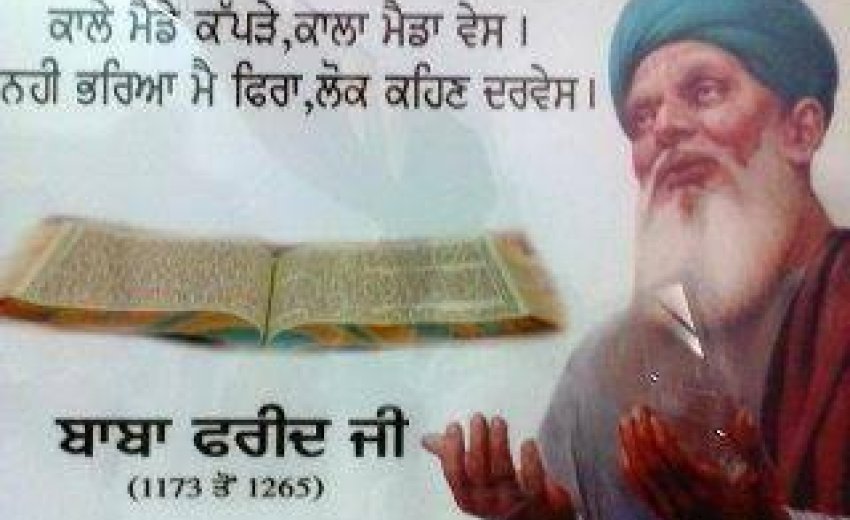
I observed that the roots of Gangsar miracle can be traced from the Sufi shrine cum Gurudwara at Faridkot.
Here, people offer broom and salt with the same purpose to get rid of skin related problems.
It can be said that these are the practices which have been inherited by Sikhism from Islam.
Importantly, Sikhism holds a high regard for Farid’s work, as the Sikh Holy Scripture is the only source through which Farid’s work can be accessed.
In this way, it can also be said that these practices have also inspired other religious sites related to Sikhism.
Conclusion
To gain an understanding for the notions attached to folk belief and public health.
I would propose that the politics of the region played as an inseparable entity in the localisation of these beliefs.
Mass migration of 1947 and led by the developments in 1984, gave these folk beliefs a new outlook as Sikhs gathered to together in a large number in a small cultural landscape.

It can be assumed that it is not the religion which guides the traditions but it is the traditions which guide the religion.
Furthermore, the politics works as helping hand in this process of localisation of folk belief system.






